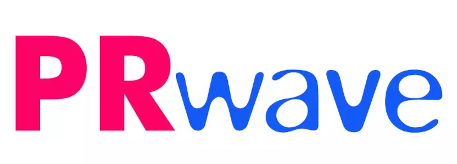 by Sam Wright
by Sam Wright
When it comes social media marketing know what not to do is in many ways even more important than knowing what to do. An ineffective social media campaign can result in nobody hearing about your product. A bad social media campaign can result in everyone hearing about your product, for the wrong reasons.
This article won’t tell you the best ways to market your product through social media. Instead it will tell you the things you absolutely should not do.
So when your marketing guy suggests that you could raise awareness by trying any of these tricks, just walk away.
Buying Followers
Twitter is one of the shop fronts your business has. People will judge you buy it. Of course, one of the things people will look at when they come to your Twitter account is the number of people following it- something that can be difficult when you’re just starting out. If you’ve only got a dozen followers it can look bad and quite a few people and organisations have been tempted to go to shady services that will offer you thousands of Twitter followers for just a small sum of money.
Why you should never do this
Because, frankly, people notice. Anyone who has spent any time on Twitter quickly learns to sniff a rat. We know that those teenager girls who love playing on webcam are probably linking to a website full of Trojan software. We know if a Twitter account appears to belong to the character Ted from the Seth Macfarlane movie, Ted, there’s a very, very high chance it isn’t actually officially affiliated with the makers of the movie, Ted.
And most of all, when we see someone we’ve never heard of who has hundreds of thousands of followers, and most of those followers have blank white eggs or stock photos for profile pictures, and usernames with lots of numbers in, and either no bio or for that matter, any tweets, we can guess somebody has paid somebody else a lot of money to set up a bunch of fake profiles.
Yes, I’m looking at you @Soldier78759, @BrazosJake and @pattry7! If those are your real names! These are but three of the “people” following former presidential candidate and moon base advocate Newt Gringrich, who was widely mocked this summer when analysts found out that 92% of his Twitter followers were fake. Mitt Romney apparently made the same mistake and both candidates received a heap of negative press as a result.
Now if you get caught out using techniques like this it might not lead to as much bad press as Romney and Gingrich received, but it will leave you looking extremely seedy to any passing readers who have potential to become real followers.
Bombarding users with “like” requests
These days the most sought after customer is the returning customer. You don’t want a customer to buy something and never be seen again, you want them to keep coming back, whether to buy products, or services, or simply keeping giving your website hits to build up ad revenue. To do this you need two things. Firstly, you need to know as much about your customer as possible. Secondly, you need to make sure your customer is kept up to date about your latest products, special offers and content.
You can achieve both of these goals by ensuring that your customers link up with you through their Facebook, Twitter, Youtube and other accounts. The most effective way to do this is with a call to action, at every available opportunity, encouraging them to do just that.
Why you shouldn’t do this
You might not remember this, it was a long time ago, but once upon a time you used to go into a shop, pay for a thing, then leave the shop, and that would be the end of your dealing with them until the next time you needed something from that shop. These days you can’t buy anything online without first creating a username, and giving them an email address, automatically subscribing you to their newsletters and updates and every single one of them asking you Like or Follow or Subscribe to every single thing. Frankly it is a massive pain that has become so ubiquitous half of us barely even notice it anymore. But every time you stick a “Like” sticker on something your reader will still feel that momentary twinge of irritation, and you don’t want the people using your site to feel that.
This doesn’t mean you should shut down all your social media feeds immediately. Of course it doesn’t. It just means that the way to get likes, follows and subscriptions is to provide content people actually want to be kept up to date on. If you’re asking how to get more followers instead of asking why people should follow you, then you’re doing social media entirely backwards.
Opening yourself up to “Bashtagging”
One technique several marketing companies have tried recently is making us of the hashtag function in Twitter, a word or phrase #likethis that, when clicked on, shows you what every person on Twitter is saying on that subject.
It’s a particular favourite for TV programmes, who have begun the habit of posting the relevant hashtag on screen during the programme so that viewers can keep track of what people are saying about it while it’s on. It’s also a popular tactic for political or charity movements. The #welovethenhs was a particularly popular one lately when people got angry about Conservative cuts to the UK’s National Health Service. If a hashtag is used widely enough, it trends, becoming visible to more people and attracting a larger audience.
If you can get a hashtag trending, it’s a surefire why to attract custom, surely?
Why you shouldn’t do this
The trouble with having a hashtag trending is that you have no control over what people will actually say on it. This is particularly dangerous with hashtags for companies that people have, let’s say, mixed opinions about. If you aren’t universally loved, this can turn into a public affairs nightmare. Such as when McDonalds launched a hashtag called #McDStories, intending for all their delighted fans to wax lyrical about how great it is being in a McDonalds. The thing is, despite the company’s massive annual turnover and omnipresent branches, nobody actually openly admits to liking McDonalds. Even the people who enjoy the combination of fat, salt and guilt that makes up their food still can’t stand the corporation. So instead of stories of fun things happening in McDonalds, we got this:
And this:
Or best of all, this:
@FakeIceman: Last night I dreamt that Grimace gave me a handjob #McDStories
Even if your company isn’t as universally loathed (seriously, we hate those guys) as McDonalds, people still hate adverts in almost all their forms, and so if you ask people to act as your unpaid advertising foot soldiers, they’re going to rebel.
Byline:
Sam Wright is a freelance writer and journalist who works in social media marketing. He once went to McDonalds and found a green French fry #McDStories


